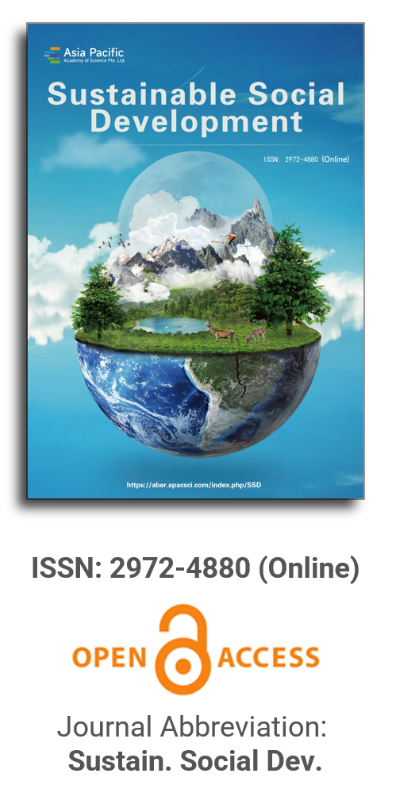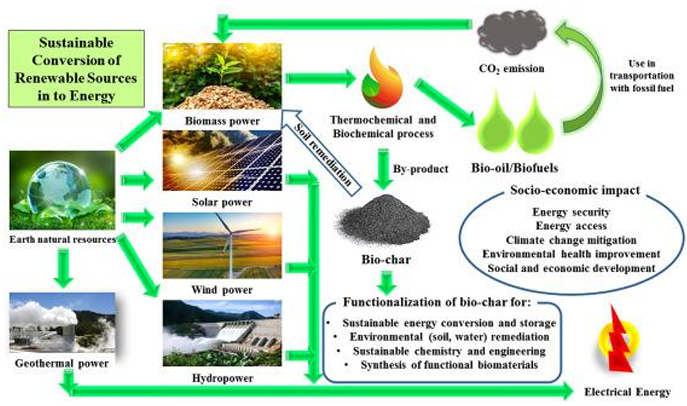
Asia Pacific Academy of Science Pte. Ltd. (APACSCI) specializes in international journal publishing. APACSCI adopts the open access publishing model and provides an important communication bridge for academic groups whose interest fields include engineering, technology, medicine, computer, mathematics, agriculture and forestry, and environment.

Supply chain sustainability initiatives at Bajaj Electricals Limited to achieve Zero Waste to Landfill
Vol 2, Issue 2, 2024
Download PDF
Abstract
Subject area: This case allows management students to engage with the implementation of sustainable supply chain management practices both at the macro and micro levels. The decision to make supply chain operations sustainable is no longer an option for many organisations. The question is not “should we do it? but how can we implement sustainable supply chain management practices?” Study level/applicability: This case has been developed for management institutes and schools that teach undergraduate and postgraduate programmes. Sustainability has become an essential module in management curriculums; thus, this case is relevant for management programmes (operations, logistics, supply chain management, business studies, and management). Case overview: This case highlights the achievements of Rameshwaram (plant head at the Nirlep factory of Bajaj Electrical Ltd.) and his team for successfully completing a sustainability initiative—Zero Waste to Landfill (ZWTL)—in a short span of six months. This case is divided into two parts: the first part presents their initiatives in making all echelons of their supply chain sustainable; the second part specifically outlines how they achieved Zero Waste to Landfill in one of the manufacturing operations in a short span of six months. A cross-functional team was put together to plan and implement the ZWTL project. Initially, the team encountered many challenges, such as poor quantification of waste at the factory site, inadequate infrastructure for waste segregation, a lack of vendor participation, and extensive training of vendors and employees as needed to ensure project compliance. However, with sustained efforts, the goal was achieved. As a result, BEL became the first Indian company in the sector to achieve 99% diversion from landfills for the waste generated at the Nirlep factory in 2021. It translated into a dramatic reduction of adverse environmental impacts. Monetary benefits were also realized by utilizing the waste for commercial use. As customers across the globe appreciated their efforts, their brand equity increased severalfold. Expected learning outcomes: The case establishes that supply chain sustainability initiatives can never be completely successful without the unanimous engagement of internal and external stakeholders. In present times, the foundation of business performance has moved away from financial profitability only to the “triple bottom line,” which incorporates environment and social responsibility. The choice between commercial viability and sustainability is no longer available to the companies, as they need to integrate environmental and social goals within their businesses and provide transparency on sustainable performance and value to not only all stakeholders but also policymakers and consumers.
Keywords
References
- Wang Z, Sarkis J. Investigating the relationship of sustainable supply chain management with corporate financial performance. International Journal of Productivity and Performance Management. 2013, 62(8): 871-888. doi: 10.1108/ijppm-03-2013-0033
- Giannakis M, Papadopoulos T. Supply chain sustainability: A risk management approach. International Journal of Production Economics. 2016, 171: 455-470. doi: 10.1016/j.ijpe.2015.06.032
- Elkington J. The triple bottom line. Environmental management: Readings and Cases. 1997, 2: 49-66.
- Miller K. The triple bottom line: What it is & why it’s important. Available online: https://online.hbs.edu/blog/post/what-is-the-triple-bottom-line?c1=GAW_CM_NW&source=INTL_GEN_PMAX&cr2=content__-__international__-__gen__-__pmax&kw=general&cr5=&cr6=&cr7=c&utm_campaign=content__-__international__-__gen__-__pmax&utm_term=general&gad_source=1&gclid=CjwKCAiA_tuuBhAUEiwAvxkgTrTbcBFOeseFExVOr7BeAypFrvltTUaTRqvwphCUUB_aa64oDnlpDxoCdjoQAvD_BwE (accessed on 22 February 2024).
- BAJAJ. 82nd annual report 2020-21. Available online: https://www.bajajelectricals.com/media/7082/annual-report-bajaj-electricals-limited-2020-21.pdf (accessed on 22 February 2024).
- Zero Waste International Alliance. Available online: https://zwia.org/ (accessed on 22 February 2024).
- Seuring S, Müller M. From a literature review to a conceptual framework for sustainable supply chain management. Journal of Cleaner Production. 2008, 16(15): 1699-1710. doi: 10.1016/j.jclepro.2008.04.020
- Carter CR, Liane Easton P. Sustainable supply chain management: evolution and future directions. International Journal of Physical Distribution & Logistics Management. 2011, 41(1): 46-62. doi: 10.1108/09600031111101420
- Carter CR, Rogers DS. A framework of sustainable supply chain management: moving toward new theory. International Journal of Physical Distribution & Logistics Management. 2008, 38(5): 360-387. doi: 10.1108/09600030810882816
- Geissdoerfer M, Savaget P, Bocken NMP, et al. The Circular Economy – A new sustainability paradigm? Journal of Cleaner Production. 2017, 143: 757-768. doi: 10.1016/j.jclepro.2016.12.048
- Geng Y, Sarkis J, Bleischwitz R. How to globalize the circular economy. Nature. 2019, 565(7738): 153-155. doi: 10.1038/d41586-019-00017-z
- Guide VDR, Harrison TP, Van Wassenhove LN. The Challenge of Closed-Loop Supply Chains. Interfaces. 2003, 33(6): 3-6. doi: 10.1287/inte.33.6.3.25182
- Kumar NR, Kumar RS. Closed loop supply chain management and reverse logistics—A literature review. International Journal of Engineering Research and Technology. 2013, 6(4): 455-468.
- Govindan K, Soleimani H, Kannan D. Reverse logistics and closed-loop supply chain: A comprehensive review to explore the future. European Journal of Operational Research. 2015, 240(3): 603-626. doi: 10.1016/j.ejor.2014.07.012
- Krausz R, Hughey KF, Montgomery RL. Zero waste to landfill: An unacknowledged supermegaproject. Lincoln Planning Review. 2013, 5(1–2): 10–26.
- Yang J. From Zero Waste to Material Closed Loop. Springer; 2022. doi: 10.1007/978-981-16-7683-3
- Franco-García ML, Carpio-Aguilar JC, Bressers H. Towards Zero Waste, Circular Economy Boost: Waste to Resources. Springer International Publishing; 2019. pp. 1–8.
- Indian Retailer Bureau. Bajaj electricals’ nirlep appliances receives ‘Zero Waste to Landfill’ certification by Intertek. Available online: https://www.indianretailer.com/news/bajaj-electricals-nirlep-appliances-receives-zero-waste-to-landfill-certification-by-intertek.n11438/ (accessed on 22 February 2024).
- Tennews. Bajaj electricals subsidiary nirlep appliances receives ‘Zero Waste to Landfill’ certification for 99% waste diverted from landfills. Available online: https://tennews.in/bajaj-electricals-subsidiary-nirlep-appliances-receives-zero-waste-to-landfill-certification-for-99-waste-diverted-from-landfills/ (accessed on 22 February 2024).
Supporting Agencies
Copyright (c) 2024 Anita Kumar
License URL: https://creativecommons.org/licenses/by/4.0/

This site is licensed under a Creative Commons Attribution 4.0 International License (CC BY 4.0).

Prof. Kittisak Jermsittiparsert
University of City Island, Cyprus






It is with deep regret that we announce the cancellation of the Forum on Sustainable Social Development & Computing and Artificial Intelligence, originally scheduled for June 15, 2025.

